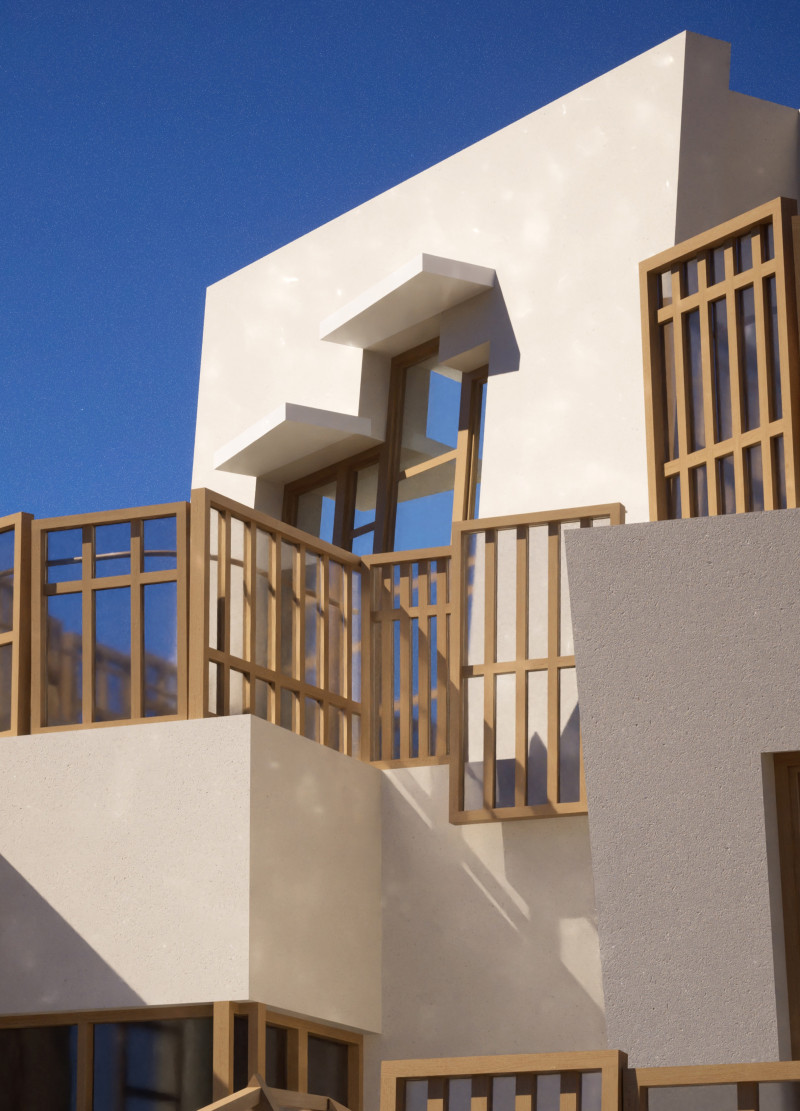5 key facts about this project
Functionally, the project is designed to accommodate activities that range from communal gatherings to private moments of reflection. The layout has been carefully considered to ensure that spaces flow seamlessly into one another, promoting an atmosphere of interaction but also providing opportunities for solitude. Every aspect of the design has been contemplated to serve a purpose, whether it is through the thoughtful placement of windows to maximize natural light or the spatial configuration that encourages movement and engagement.
One of the essential elements of the project is its integration with the surrounding landscape. The building is positioned in a manner that respects the natural topography and existing vegetation, creating an organic connection with the site. The use of local materials strengthens this relationship, ensuring that the architecture resonates with its geographical context. For instance, materials such as bamboo and sustainably sourced wood are utilized to echo both the local building traditions and a commitment to environmental sustainability. These choices not only provide aesthetic value but also enhance the structural performance and longevity of the project.
The architectural design further incorporates innovative techniques that reflect a modern approach to building. It incorporates passive design strategies that optimize heating, cooling, and lighting, reducing energy consumption significantly. Large glass facades invite an abundance of natural light, fostering a welcoming atmosphere while blurring the lines between indoor and outdoor spaces. The thoughtful incorporation of shading elements ensures comfort without compromising the open feel of the design.
Unique design approaches are evident in the layout and materiality of the spaces. The project features multifunctional areas that adapt to various uses, highlighting versatility. For example, spaces that serve as meeting rooms during the day can be converted into intimate gathering spots in the evening, illustrating the adaptability of the architecture. Additionally, the use of textured materials such as stone for pathways and concrete for structural elements adds depth to the sensory experience, inviting exploration and interaction.
The project also embraces technology, integrating smart systems that enhance user experience and operational efficiency. These systems manage lighting, climate control, and security, allowing for a flexible and responsive environment. The architecture, therefore, serves not only the immediate needs of its occupants but also aligns with future trends in sustainable living and smart design.
Each zone within the building conveys a distinct identity while contributing to an overarching coherence. The communal spaces cultivate a sense of community and connection, while private areas offer retreats that prioritize privacy and tranquility. The design ultimately reflects a sophisticated understanding of how spaces can influence human behavior and interactions.
In essence, this architectural project serves as a model for future designs that prioritize sustainability, innovation, and community engagement. The intentionality behind each design decision prompts a reevaluation of architectural norms, showcasing what can be achieved when thoughtful design principles are applied. For those interested in delving deeper into this project, examining architectural plans, sections, and various design elements will enhance understanding and appreciation of the concepts and execution involved. The intricate details and comprehensive design strategies present an invitation to engage with an architectural narrative crafted with care.


























